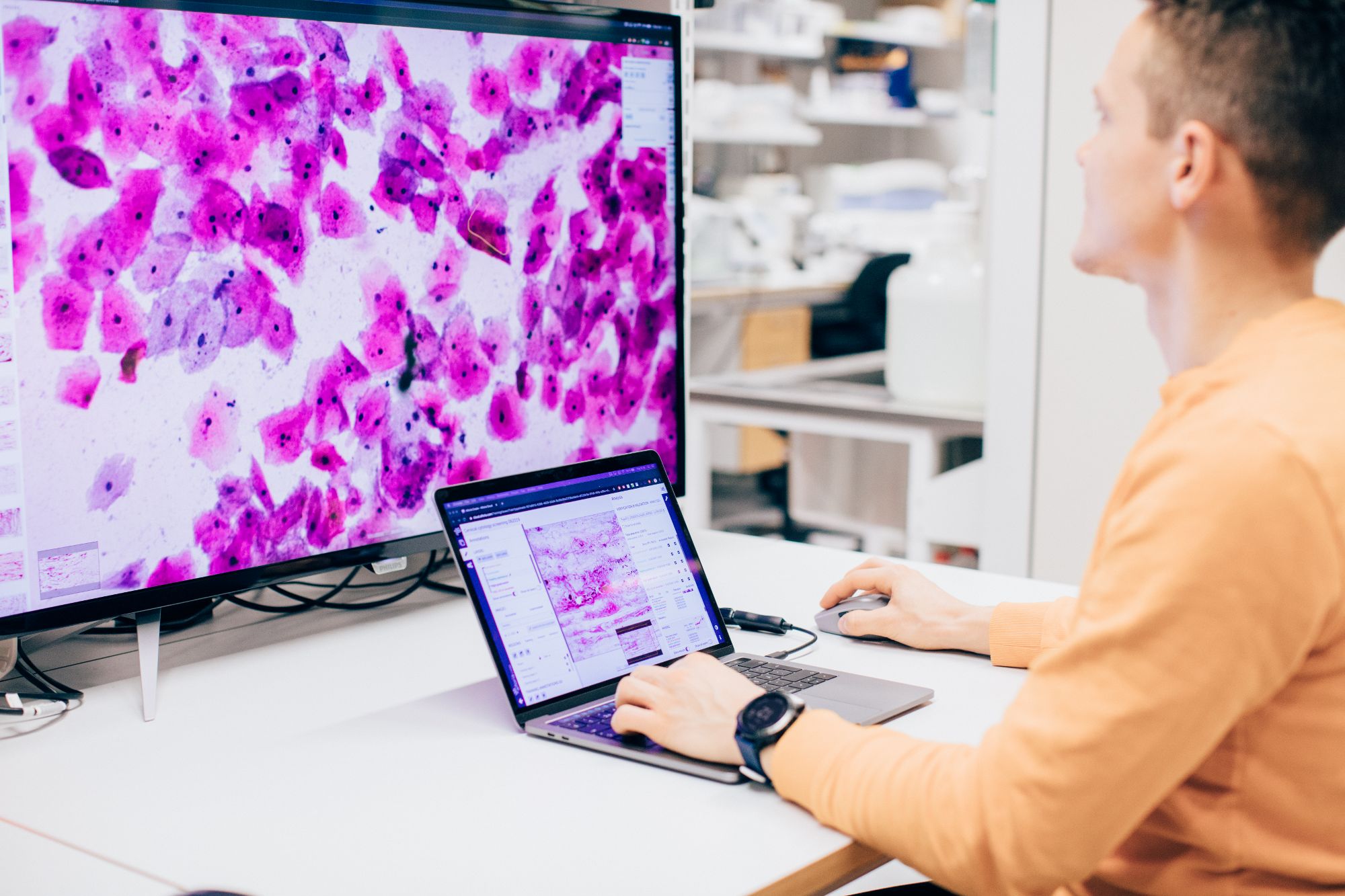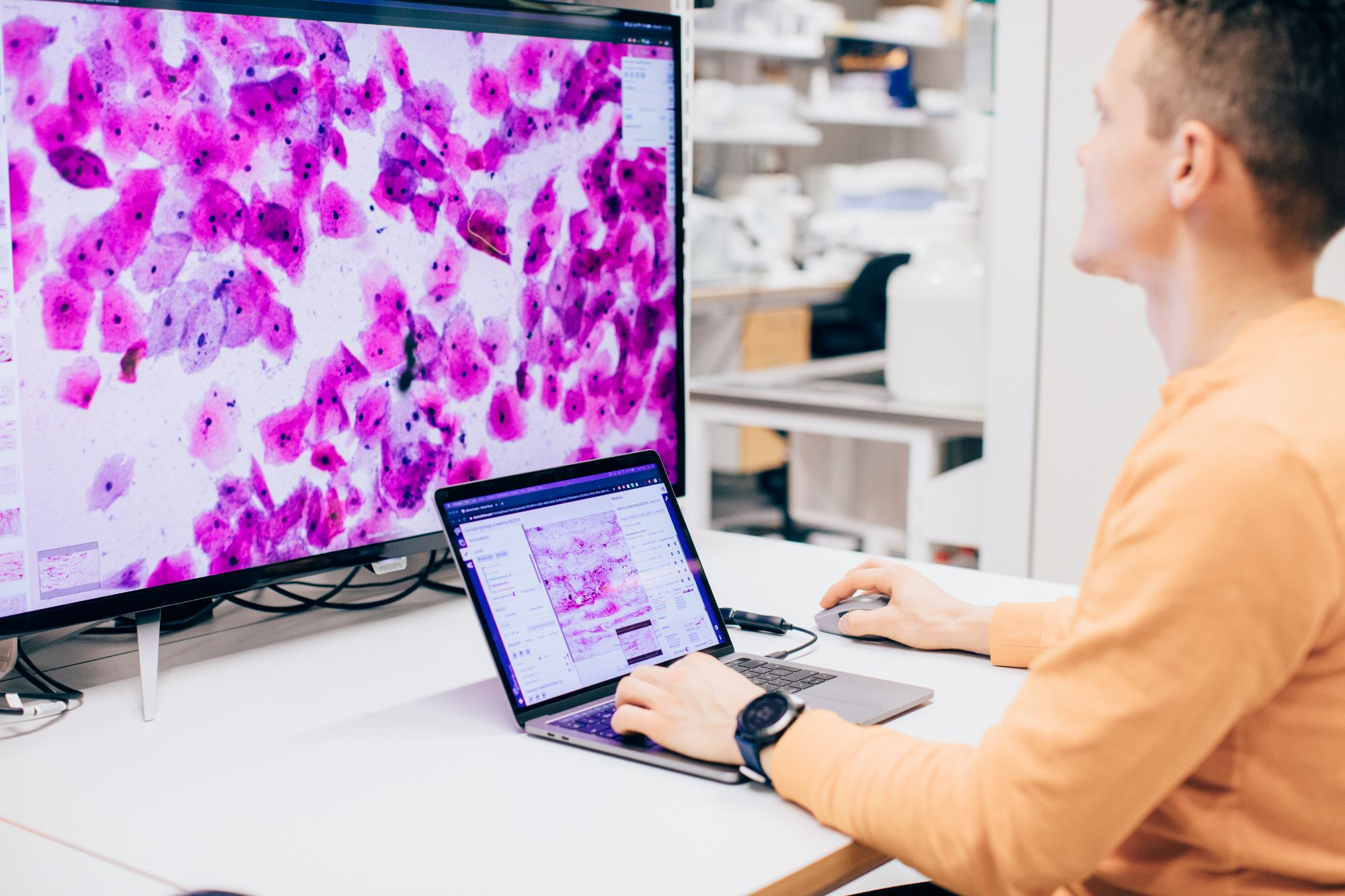Aiforia as an investment
Market
Market
The challenge
Pathologists are pivotal to the healthcare system, investigating and diagnosing patient samples to guide medical treatment. Aging populations and rising rates of diseases like cancer are creating a burden on healthcare systems around the world. The prevalence of cancer is expected to increase by 47.4% between 2020 and 2040, while the share of the population 65 years or over is expected to increase from 9.3% in 2020 to around 16.0% in 2050 globally.
These factors create an additional burden to pathologists, an already underrepresented group of healthcare professionals. Fewer medical doctors are specializing in pathology while sample numbers are on the rise, creating an imbalance. Exacerbating this disparity is the fact that pathologists have had to rely on the same technology for the past 150 years; manual slide analysis with microscopes is slow, manual, and prone to variability.
Around the world, pathologists are overworked. Patients are waiting for a long time to receive results and are, in some cases, administered ineffective treatments due to misdiagnosis or the inability to administer personalized treatment.
The solution
The digital transformation in pathology is under way as digital pathology, the digitisation of glass slides traditionally examined under a microscope to now be analysed on a computer, is becoming increasingly prevalent in labs and hospitals across the world in an effort to modernise the diagnostic workflow. Digital pathology has paved the way for even more advanced technology like AI, to further advance image analysis.
Automation, digital technology, and AI are in growing demand to alleviate the challenges faced by global healthcare systems. AI-based methods have the potential to standardise sample review by reducing bias while increasing the speed and accuracy of analysis — assisting the pathologist in their work and enabling precision diagnostics. Patients could receive diagnoses faster, are administered personalised treatments, and patient care is democratised.
Key drivers of growth
Increasing rates of disease like cancer, population ageing and the rising prevalence of chronic conditions fueling the demand for pathology analysis as more samples need to be analyzed1
The shortage of pathologists has been detected in certain areas of the medical industry. This combined with growth in the number of samples, could lead to pathologists being overworked. For example in a study conducted in the United Kingdom in 2018, 97% of histopathology institutions indicated they faced a shortage of personnel resources to a certain degree in order to meet clinical demand5
Expansion in digital pathology is widespread as the adoption of microscope scanners to convert samples into digital images, making it possible for laboratories to adopt AI, is increasing. The digitalization rate is forecast to grow and estimated to reach 36% in 20276
Technological development and therefore growing adoption of digital pathology solutions to enhance lab efficiency and to address the critical shortage of pathologists, opening up the market to AI-assisted solutions
Sources add
1WHO Report on Cancer, 2020 PDF Download
2International Agency for Research on Cancer
3United Nations Department of Economic and Social Affairs, Population Division (2020). World Population Ageing 2020 Highlights: Living arrangements of older persons
4Wang et al. Journal of the American Academy of Dermatology. 2018;78(1):47-53
5The Royal college of pathologists: Histopathology workforce census 17/18
6Market Intellix and Maia Research: Global Microscope Slide Market Report 2021






